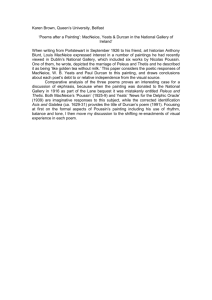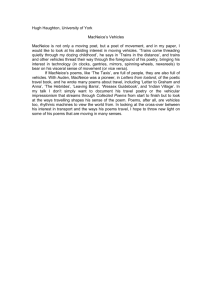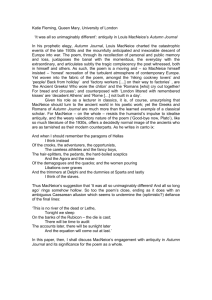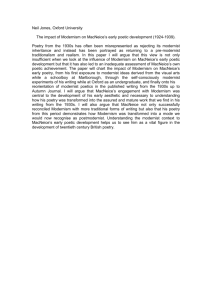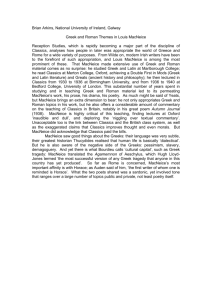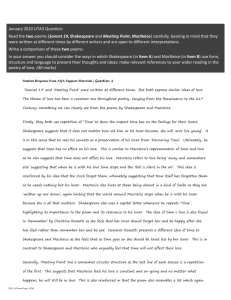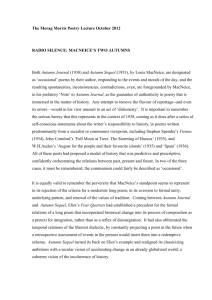Out of the Museum: MacNeice & the Confines of Aesthetic Space
advertisement
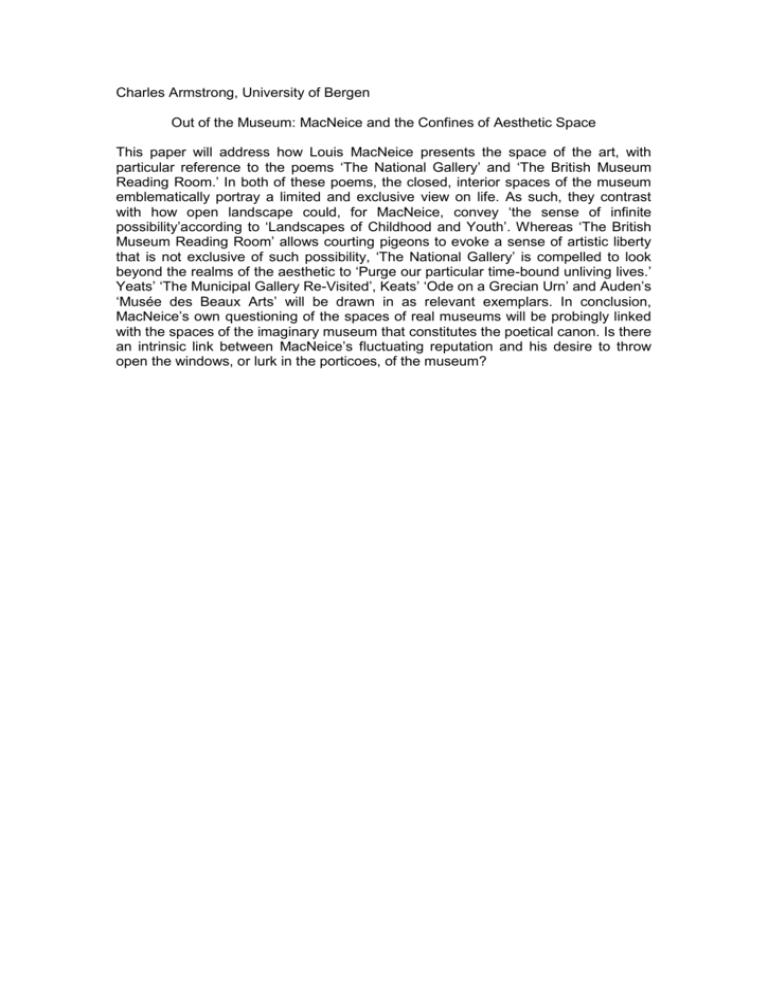
Charles Armstrong, University of Bergen Out of the Museum: MacNeice and the Confines of Aesthetic Space This paper will address how Louis MacNeice presents the space of the art, with particular reference to the poems ‘The National Gallery’ and ‘The British Museum Reading Room.’ In both of these poems, the closed, interior spaces of the museum emblematically portray a limited and exclusive view on life. As such, they contrast with how open landscape could, for MacNeice, convey ‘the sense of infinite possibility’according to ‘Landscapes of Childhood and Youth’. Whereas ‘The British Museum Reading Room’ allows courting pigeons to evoke a sense of artistic liberty that is not exclusive of such possibility, ‘The National Gallery’ is compelled to look beyond the realms of the aesthetic to ‘Purge our particular time-bound unliving lives.’ Yeats’ ‘The Municipal Gallery Re-Visited’, Keats’ ‘Ode on a Grecian Urn’ and Auden’s ‘Musée des Beaux Arts’ will be drawn in as relevant exemplars. In conclusion, MacNeice’s own questioning of the spaces of real museums will be probingly linked with the spaces of the imaginary museum that constitutes the poetical canon. Is there an intrinsic link between MacNeice’s fluctuating reputation and his desire to throw open the windows, or lurk in the porticoes, of the museum?
